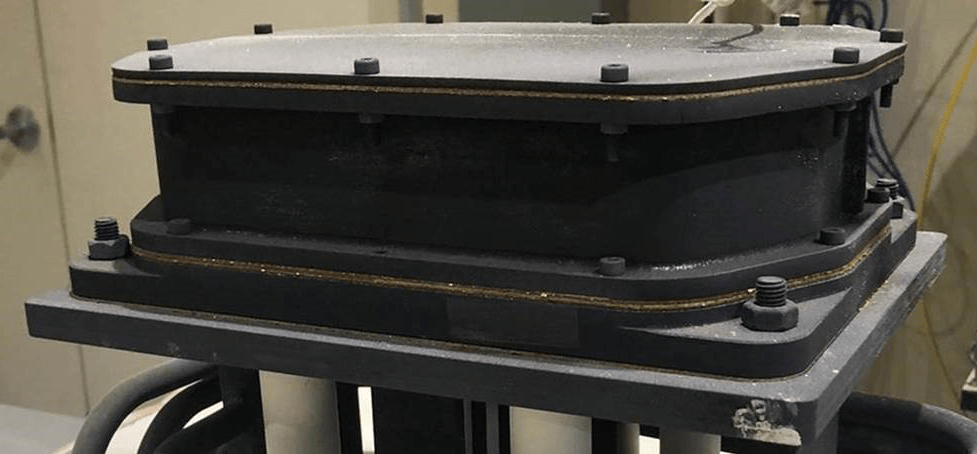UCI Advanced Power and Energy Program to research making steel with renewable resources
Department of Energy-funded project seeks to replace coal-fired plants with hydrogen electrolysis process

The U.S. Department of Energy has awarded UCI’s Advanced Power and Energy Program $5.7 million to lead an effort to develop novel processes for manufacturing steel without greenhouse gas emissions. The collaboration with Italy’s Politecnico di Milano and Laboratorio Energia Ambiente Piacenza, U.S. companies FuelCell Energy and Hatch and Southern California Gas will employ solid oxide electrolysis cells as a way to completely decarbonize steel production.
The UCI team is led by APEP director Jack Brouwer, professor of mechanical & aerospace engineering, and includes APEP senior scientist Luca Mastropasqua.
Steel production is responsible for 6.7 percent of carbon dioxide emissions worldwide. That number is expected to rise due to forecasted increases in demand for the material. The DOE-funded project will seek to prove that renewable hydrogen, produced via high-temperature electrolysis using cells powered by wind and solar resources, can successfully be integrated into steel manufacturing processes. Researchers will develop the technological basis, build and demonstrate a small-scale prototype unit and study the feasibility of future scale-up and commercialization.
Traditional steel manufacturing plants, known as integrated cycle steel mills, use blast furnaces that employ coke and coal-derived gases to convert iron ore into metallic iron. Direct Reduced Iron plants, which currently do not exist in the U.S., produce metallic iron from natural iron ore without melting it. The DRI process employs shaft furnaces with temperatures below 1,200 degrees centigrade to chemically strip oxygen from the iron ore, which is a much more energy-efficient approach.
“The closest DRI plants are in Canada and Mexico,” Brouwer said, “However, U.S.-based companies are active in supporting this technology.”
The newly funded three-year project will explore techniques for integrating hydrogen produced through electrolysis – an electrochemical process that uses electricity and heat to split water into hydrogen and oxygen – into the DRI process. In this case, the electrolysis will be powered entirely by wind and solar resources, producing completely renewable hydrogen. That hydrogen will be used as the reducing gas that strips oxygen from iron ore to form the metallic iron.
While there is a DRI plant in Sweden that currently uses renewable hydrogen, its lower-temperature electrolyzer technology is different and less easily integrated into the manufacturing process, according to Brouwer.
“The process that we propose uses a high-temperature electrolysis system that can be directly coupled with the high temperatures of the shaft furnace where the iron ore conversion occurs,” said Mastropasqua. And since the only byproduct of the process is water, that water can be used at high temperatures to produce more hydrogen, closing the loop and allowing it to be thermally integrated back into the DRI furnace.
Along with its partners, the UCI team will demonstrate that its hydrogen production technology is more efficient and produces lower emissions than current technology. Additionally, the project will prove that steel can be produced with zero greenhouse gas emissions at a cost comparable to current state-of-the-art technologies. Finally, the project will verify that its new process can easily be coupled with other industrial sectors, including transportation, to further reduce greenhouse gas emissions.
The project’s Italian collaborators, with whom UCI has partnered since 2016, are internationally recognized experts in thermodynamic modeling and process simulation of industrial systems, especially electrochemical systems, Mastropasqua said. Their role in the project is to simulate the new system’s integration into DRI plants as well as to design a prototype plant.
FuelCell Energy, a U.S. fuel cell and electrolyzer manufacturer, will build and operate an electrolyzer prototype for the project at its manufacturing site in Danbury, Conn. The prototype is expected to render approximately 10 kilograms of hydrogen per day, enough to produce one ton of steel per week.
Hatch, an engineering consulting firm with expertise in novel steel production technologies, will provide a detailed design for the large-scale plant that ultimately will use the demonstrated technology, while Southern California Gas will help with technology transfer.
“We will prove that our process results in higher steel production energy efficiency compared to state-of-the-art technology,” Brouwer summarized. “A blast furnace steel mill uses 11 gigajoules of fuel to produce one ton of steel. We aim to reduce that value to 8 gigajoules/ton, and those 8 gigajoules won’t come from coal anymore, but from sun and wind.”